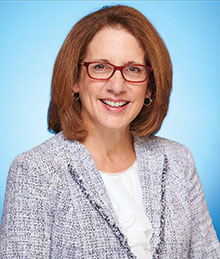Psychiatrists Call for Action After CDC Data Reveal Worsening of Youth Mental Health Crisis
Abstract
The CDC finds an alarming number of teens to be suicidal, depressed, and/or experiencing sexual violence. Child and adolescent psychiatrists recommend expanding school-based mental health support and social-emotional learning curricula, primary care–based child psychiatry access programs, and more research focused on teen girls’ mental health.

America’s teenagers, particularly girls, are engulfed in “a growing wave of sadness, violence, and trauma,” said officials from the Centers for Disease Control and Prevention (CDC) when the agency issued the latest Youth Risk Behavior Survey earlier this year.
Girls fared worse than boys across nearly all measures. The report also confirms ongoing and extreme distress among teens who identify as LGBTQ as well as minority students.
“The CDC report is pretty clear and pretty alarming,” said Anish Ranjan Dube, M.D., M.P.H., chair of APA’s Council on Children, Adolescents, and Their Families. “However we are not surprised by the data because the pediatric mental health crisis has been brewing for a long time. The shutdowns during COVID likely exacerbated the crisis and brought it out into the open.”
Other contributing factors include economic uncertainty, the proliferation and impact of social media, increasing political and social unrest, anti-LGBTQ laws and rhetoric, and exposure to gun violence and police shootings, he added.
Researchers surveyed more than 17,000 U.S. high schoolers in fall 2021, when most had just returned to school following pandemic shutdowns. The report found some bright spots: 61% of high school students felt close to people at school. The CDC wrote that this school connectedness is associated with decreased risk of suicidality, sex, substance use, and experiences of violence. In addition, 86% reported that their parents or other adults in their family most often knew who they were with and where they were going—also similarly associated with decreased mental health–related risks. In addition, the number of teens involved in risky sexual behavior or substance use continued to decline, as did the number of youth bullied at school.

Debra E. Koss, M.D., said the high prevalence of adolescent mental illness underscores the importance of early intervention, evidence-based models of care, and leveraging and expanding the child psychiatry workforce.
Debra E. Koss, M.D., a clinical assistant professor of psychiatry at Rutgers Robert Wood Johnson Medical School, said the high prevalence of adolescent mental illness underscores the importance of early intervention, evidence-based models of care, and leveraging and expanding the child psychiatry workforce. “We need to meet children where they’re at in their communities by utilizing school-based mental health programs,” she said. Schools are receiving an infusion of new funding to address child and adolescent mental health, but Koss emphasized the importance of psychiatrists having a seat at the table to ensure that science guides the resulting policies as well as spending.
Additional findings from the Youth Risk Behavior Survey include the following:
Nearly 60% of girls said they felt so sad or hopeless for at least two consecutive weeks that they stopped doing their usual activities, a significant increase since the 36% recorded in 2011. Among boys, nearly 30% reported such feelings. Nearly 70% of LGBTQ students reported persistent sadness.
Thirty percent of girls seriously considered suicide—double the number from 10 years prior. The proportion of boys (14%) seriously considering suicide stayed about the same as in 2011.
An all-time high of 13% of female students attempted suicide one or more times in 2021, as did 7% of boys. Even higher proportions of minority high schoolers attempted suicide: LGBTQ (22%), American Indian/Alaskan Native (16%), and Black (14%) students.
Nearly 1 in 5 girls reported past-year sexual violence—a 20% increase since the CDC first started monitoring this measure in 2017. Also on the rise: 14% of teen girls reported they had been forced to have sex in their lifetime. Forced sex and sexual violence are linked to substance use, mental health problems, and suicide risk, according to the report.

Anish Ranjan Dube, M.D., M.P.H., urged clinicians working with teens to be more specific and deliberate in screening for depression and suicidality, as well as for experiences of sexual violence, in light of the CDC’s findings.
Dube urged psychiatrists working with teens to be more specific and deliberate in screening for depression and suicidality, as well as for experiences of sexual violence, in light of the survey findings. He also called for more research on the stark differences between girls and boys highlighted by the study. “This is a concern we need to be investigating and following more closely.” He is alarmed by the results showing a dramatic increase in sexual violence, given the emphasis in recent years on educating students about the importance of consent.
School-Based Teen Mental Health
Gabrielle Shapiro, M.D., a clinical professor of psychiatry at Icahn School of Medicine at Mount Sinai, urged more cities to adopt the APA Foundations’ Notice. Talk. Act. at School, a program that helps school staff build relationships with students, notice when they might be showing signs of mental distress, provide support, and take action when needed to connect them to mental health services.
“We also need to reinforce the idea of having social and emotional curricula for students from preschool on up,” she added. Social-emotional learning is aimed at helping students develop self-regulation, interpersonal skills, good decision-making, and resiliency.
“As early as preschool, kids need to learn to talk about whether they’re sad or happy today, to identify sad and happy faces on others, and to understand that feelings are as important as physical symptoms,” Shapiro said. Schools should include parents in this curriculum, by offering social-emotional learning sessions at back-to-school nights or Parent Teacher Association meetings, she added.

Gabrielle Shapiro, M.D., said the nation needs to embrace social and emotional curricula for students from preschool on up to help students learn self-regulation and healthy coping strategies. However, some conservative states are barring these types of lessons in schools because they can touch on issues of race, racism, gender, and/or sexuality.
Shapiro is concerned that conservative states across the country are barring social-emotional learning lessons in schools because some programs touch on issues of race, racism, gender, and/or sexuality. Over the past three years, legislators in at 25 states have passed over 60 new laws that restrict what teachers can say about these issues, limit rights for transgender students, and/or ban access to school libraries/certain books. “We’re not trying to encroach on the belief systems of parents, but we need to give kids a space where it’s OK for them to talk about their feelings.”
Finally, Shapiro said the nation needs to fully support and fund the use of telemedicine and telepsychiatry services. “It is the key to reaching more people.” With the end of the Public Health Emergency on May 11, rules governing telehealth are expected to tighten.
Child Psychiatry Access Programs
Since most children see a primary care provider at least annually, Koss said that providing support to pediatricians to treat and assess pediatric mental illness makes the most strategic use of the child and adolescent psychiatry workforce. Child psychiatry access programs (CPAP) provide enrolled pediatricians with training as well as access to a psychiatrist-staffed warmline to consult by phone on a child’s care. The National Network of Child Psychiatry Access Programs reports that there are now 38 states with such programs. CPAP also typically gives families access to clinical navigators to help ensure children are connected with needed treatment.
“Child psychiatry access programs are incredibly effective,” Koss said. “They’re demonstrating increased identification of mental illness, better access to care, increased satisfaction of families, and increased confidence of primary caregivers in being able to screen and assess these disorders. The Department of Health and Human Services awarded these programs nearly $27 million last October and aims to begin expanding child psychiatry access to hospital emergency departments as well as schools, to support more individuals who work with children. ■



